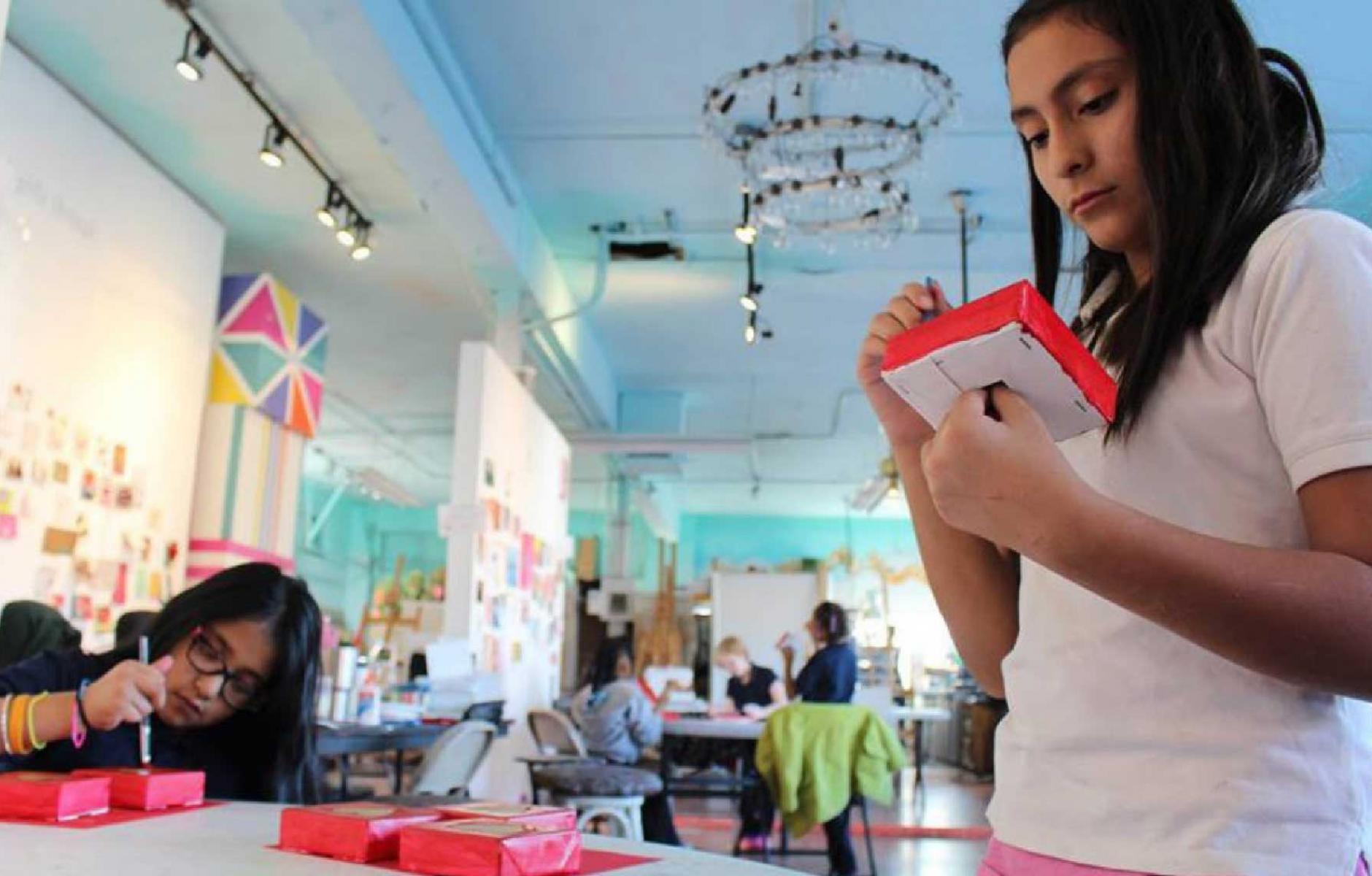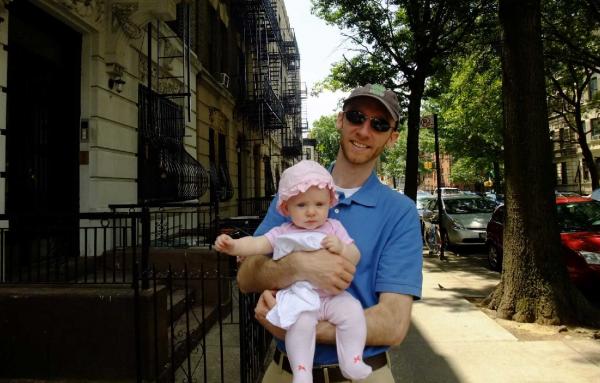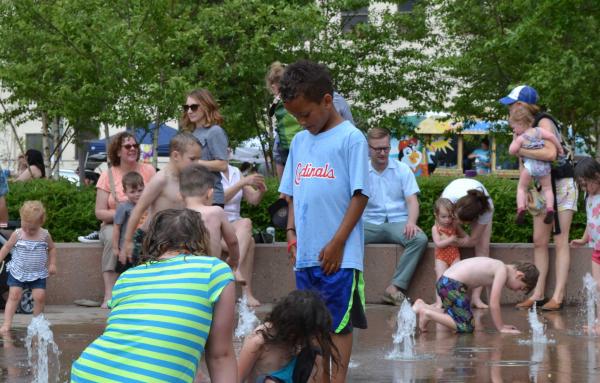
Families, cities, and schools: Nonprofit and grassroots solutions
In part three of our series on Urban Living with Kids, we began a discussion on the challenges facing young families with children who desire an urban lifestyle when it comes to neighborhood schools. We also profiled an existing effort led by Tulsa Public Schools to provide a top-notch elementary school to serve both the middle-income families wanting to live in and around downtown as well as the low-income families currently residing there. Continuing with our focus on Tulsa, let me share two additional examples at differing scales–first, the work of a community-based non-profit, and second, a grassroots effort lead by parents–that are working toward creating great public schools in other urban neighborhoods of Tulsa.
Growing Together Tulsa: A model for nonprofit community-based organizations
Growing Together Tulsa is a non-profit community organization with a mission to create pathways for children to break the cycle of poverty and achieve economic success. It’s currently working in two neighborhoods in Tulsa. One of these neighborhoods – Kendall Whittier – is a predominantly Latino neighborhood with great urban and architectural bones. It is arguably the most mixed-use and walkable urban neighborhood in Tulsa, and includes shops, restaurants, art galleries, a movie theater, offices, light industrial workshops, a library, schools, churches, parks, a University, a mix of housing types, and even a full-service grocery store within a ½-mile walking radius. However, it also includes significant areas of concentrated poverty. Given these conditions, the neighborhood schools have severely struggled over the last few decades to meet the demands of the student body they serve.

A few years ago, Growing Together began its work in Kendall Whittier by focusing on improving the schools and the educational experiences for children in the neighborhood. Thanks to investments from and partnerships with local and national foundations, social agencies, higher education institutions, and faith communities, they have already seen significant improvements in the educational outcomes of the students and schools they serve.
However, spending an average of $3.5 million annually in the neighborhood, Growing Together soon realized that for the results of this effort to be sustainable, it needed to take a much broader approach. To do so, they decided to take groundbreaking action (literally), and recently unveiled their Theory of Change initiative, which includes efforts to improve the built environment and community vibrancy of the neighborhood. As a part of this effort, they are partnering both with Habitat for Humanity and with a local private developer to provide a significant amount of new housing in the neighborhood over the course of the coming years. One of their partners, the George Kaiser Family Foundation, has already built a mixed-use, mixed-income development there.

The goal of this effort is to attract a greater socio-economic mix of families to the neighborhood and to its schools. Over the past decade, the neighborhood has seen a number of urban pioneers move in, but most have not enrolled their kids in the public schools. Thus, while their presence helps to improve the neighborhood, they are not alleviating the challenges facing its schools.
Growing Together is working to change this by first improving the schools and the educational amenities that they provide (which it has already made great strides in doing) and second strategically targeting and attracting community-minded middle-income families who already have some stake in the neighborhood. To accomplish this, Growing Together – in conjunction with the Tulsa Public School District and their local private developer partner – will provide $4,000 in down-payment assistance toward the purchase of a new home to school teachers who want to live and work in the neighborhood.

The low-income children of the neighborhood will still be served by these improved neighborhood schools, and the influx of children from middle-income families will help to promote that excellence at a faster rate for all students and sustain that rate of progress over time. The benefits provided to kids who attend socio-economically diverse schools are well documented. Moreover, these benefits are bi-directional. A recent study by the Century Foundation reports that middle-income kids who attend an integrated and diverse socio-economic school display significant decreases in expressions of racism, significant increases in expressions of empathy, and greater social and emotional intelligence. Moreover, the study further shows that 96% of major employers today greatly value these skills when looking to hire. Thus, children from all positions within the socio-economic spectrum benefit from this diversity.
To learn more about Growing Together’s efforts, listen to Tulsa Public Radio’s interview with its Executive Director, Kirk Wester.
Lee Foundation: A model for grassroots urban pioneering parents
The previous examples in our series are inspiring, but they take higher level involvement and significant financial resources to implement. Let me offer one final example from Tulsa, one that was initially spearheaded by local neighborhood parents at Lee Elementary, a public elementary school in the traditional mixed-use collar neighborhood of Maple Ridge.
In 1997, a small group of parents came together to form the Lee Elementary Foundation, a non-profit with the goal to help augment the school’s resources while enriching the educational experience of the students specifically through capital improvements on the school grounds. Instead of utilizing traditional fundraising methods, which often place the burden of raising (or more likely donating) money on parents of students, the foundation reached out to Lee alumni, philanthropic foundations rooted in Tulsa, and other key members of the Tulsa community in order to raise funds for larger projects. Given the long history of the school (it was started in 1918), the network of alumni and of others with ties to the school was quite extensive. Moreover, like many of the old urban neighborhood schools that still exist in other cities and towns, Lee had a long early (pre-suburban-sprawl) history of being a quality well-attended local neighborhood school, with many former students going on to become successful in life and in business. Reaching out to these alumni and other community members to help Lee once again become a premier neighborhood public school was an insightful strategy that has had great success.
Today, the foundation has grown and is comprised of dedicated parents, teachers, alumni, and community supporters. Some of the projects they have undertaken are:
• Landscape improvements and ongoing ground maintenance. A significant component of this work is streetscape improvements, such as installing sidewalk pavers, street lamps, benches, landscape, and irrigation along the schools urban street edge. These kinds of interventions ultimately increase the safety, comfort, and curb appeal of the school and the neighborhood.

• An Outdoor Discovery Classroom. This innovative educational amenity is a part of the school’s playground area and includes a children’s forest, a prairie classroom, and a science education classroom with a STEM-based water feature. It is an attractive asset for the school, which is also open and available to the entire community and which has raised the profile and desirability of the school among prospective parents and families.

• Fundraising partnerships with local neighborhood businesses. An example of this creative endeavor is “School Grounds” – a special line of locally roasted coffee produced by DoubleShot Coffee Company, a local coffee shop and craft roaster in the neighborhood. The proceeds from the purchase of this special roast go towards supporting both Lee Elementary and the small schools of San Isidro, Colombia, where the beans are grown. Furthermore, cups of this coffee are also sold by parents in front of the school on certain mornings throughout the week, providing parents a way to informally gather and build community when dropping their kids off at school. Ultimately, partnerships like these are mutually beneficial to both parties. For the school, it means an increase in funding, advertising, and community building opportunities. For the local business, it means an increase in sales, advertising, and property value.

All of the examples profiled provide insight into strategies for making quality and diverse urban neighborhood schools at various scales of involvement. A key component to each is pioneering parents who are willing to be actively engaged and who can articulate to other members of the community why they too have a stake in a neighborhood school’s success. Given the future market demands and the socio-economic issues that our society currently faces, working toward making walkable, mixed-use, family-friendly, urban neighborhoods is in everyone’s best interest.







